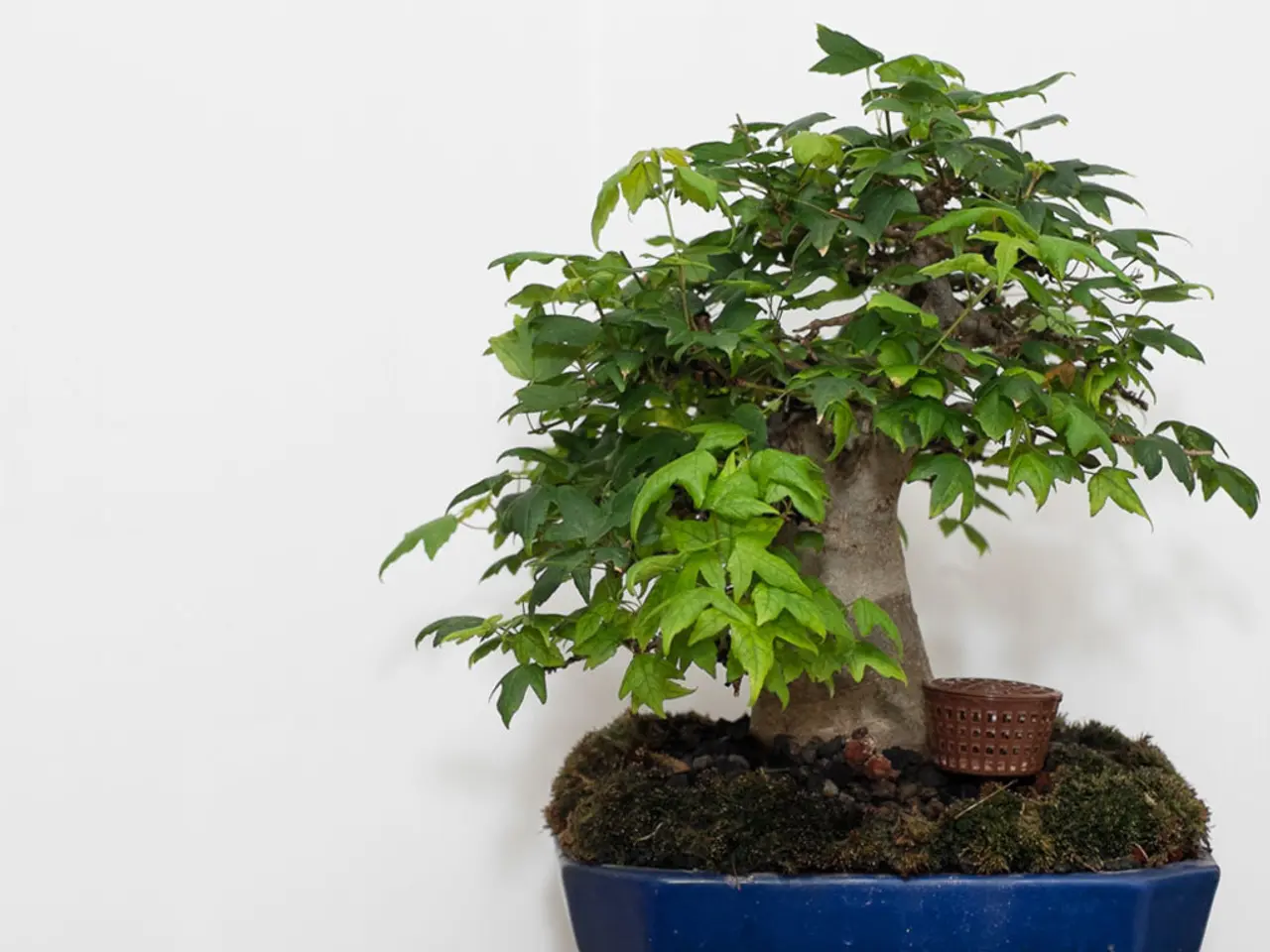Preventing the Spread of Illness in Bonsai Cultivation: Ensuring Biological Safety
In the world of bonsai, maintaining a healthy and diverse collection is a priority for enthusiasts. However, the spread of diseases and invasive species can pose a significant threat to the integrity of these collections. Here are some effective strategies for bonsai propagation that can help prevent the spread of diseases and invasive species.
Firstly, it's crucial to start with certified disease-free plant material. By using plants that have been certified as free from pests and diseases, such as those with the Plant Healthy Certification, you ensure a safe source of stock for your bonsai collection.
Secondly, sterilizing tools and equipment is essential. Regularly disinfect pruning shears, pots, and propagation tools to avoid transferring pathogens or invasive species between plants. A deeper clean every 1-2 weeks with a bleach solution can further prevent the spread of disease.
Implementing clean media and substrates is another important step. Use sterile or properly treated soil, sphagnum moss, or propagation materials to reduce contamination risk.
Quarantining new plants is also a key practice. Keep newly acquired bonsai or cuttings isolated for a period to monitor for disease symptoms before introducing them to existing collections.
Controlling environmental conditions is equally important. Maintain proper humidity, air circulation, and hygiene in propagation areas to minimize conditions favorable to pathogens.
When transporting plants, use lightweight, protected packaging (foam, bubble wrap, sphagnum moss) that prevents damage and cross-contamination.
Adhering to local biosecurity regulations is also vital. Comply with laws and guidelines on plant import, movement, and exhibition to prevent invasive species spread.
By adopting these practices, the bonsai community can safeguard the beauty and diversity of nature for future generations. It's important to remember that the accidental introduction of the emerald ash borer in North America has devastated native ash tree populations, serving as a stark reminder of the far-reaching consequences of biosecurity negligence.
It's also worth noting that composting plant material should only be done if it is free of diseases and pests, and following proper composting protocols to prevent the spread of disease.
In conclusion, adopting responsible plant disposal practices, such as disposing of infected or invasive plant material in sealed bags or containers, is a critical component of a biosecurity strategy in bonsai propagation. By implementing these best practices in plant propagation and biosecurity, we can help maintain plant health and biosecurity integrity, ensuring the continued enjoyment of bonsai for generations to come.
- To further secure a healthy bonsai collection, careful consideration of nutrition is necessary, ensuring that each plant receives the right amount of nutrients for optimal growth.
- In parallel with maintaining the physical health of plants, education and self-development are essential for a bonsai enthusiast's personal growth, with resources such as workshops, books, and online tutorials readily available for continued learning.
- Pursuing career development in the realm of science, specifically botany, can also benefit the bonsai community by allowing individuals to contribute valuable research and insights that advance the understanding of bonsai propagation and biosecurity.
- Lastly, the principles of health-and-wellness and fitness-and-exercise can be applied to the hobby of bonsai, with practices such as regular exercise to prevent repetitive strain injuries and proper ergonomics while working with plants promoting overall wellbeing and enjoyment of the craft.




